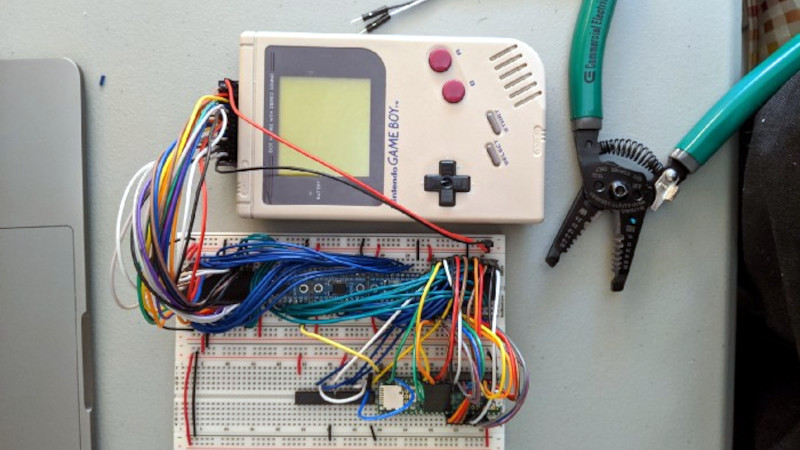In the world of chiptune music there are many platforms to choose from, each with their own special flavour tot heir sound. The Game Boy has a particular following, but it differs from some of its contemporary platforms in having a custom sound chip built into the same silicon as its processor. You can’t crank open a Game Boy and lift out the sound chip for your own synth project, instead you must talk to it through the Game Boy’s Z80 processor. This is something [Adil Soubki] knows well, as he’s completed a project that turns the handheld console into a MIDI synthesiser.
A Game Boy was designed to play games and not as a developer’s toy, so it doesn’t exactly roll out the red carpet for the hacker. He’s got under the console’s skin by mapping a section of its memory address map to the pins on a Teensy microcontroller board, and running some Game Boy code that reads the vaues there and uses them to configure the sound hardware. The Teensy handles the translation between MIDI and these byte values, turning the whole into a MIDI synthesiser. It’s a succesful technique, as can be seen in the video below the break. Best of all, the code is available, so you can have a go for yourself.
We’ve featured Game Boy synths before here at Hackaday, but usually they have been of the more conventional variety.















From what I saw back in 2005, the band called “047” from Sweden produces live music with Gameboys.
https://youtu.be/WacmzS68Kec
Nice! What’s the practical difference between this and Arduinoboy with mGB?
Hi I helped a little bit with this project. The basic implementation it is at right now is pretty similar to other midi interfaces but it accomplishes it totally differently. The others interface through the link cable port whereas this project directly writes to memory, by emulating a cartridge. This is basically a dev board prototype which has a lot of potential, such as analog inputs to the microcontroller converted to data quickly at the full 0 to 255 range instead of midi 0 – 127.
To be more specific, it has a rom and ram chip, the ram is used to send note data from the teensy/computer. The software is still very early stage and uses MIDI for a proof of concept. The final goal is to have analog inputs controlling parameters as directly as possible, not using MIDI, with the whole thing packaged as a modular synthesizer unit. Hopefully it would be able to gain some extra capabilities compared to other projects which are constrained by the MIDI protocol.
This guy has built many different giant synthesizers, including working on a giant wall of gameboys
https://www.youtube.com/watch?v=gKm0rwuQr3s
Of course it’s Megalovania